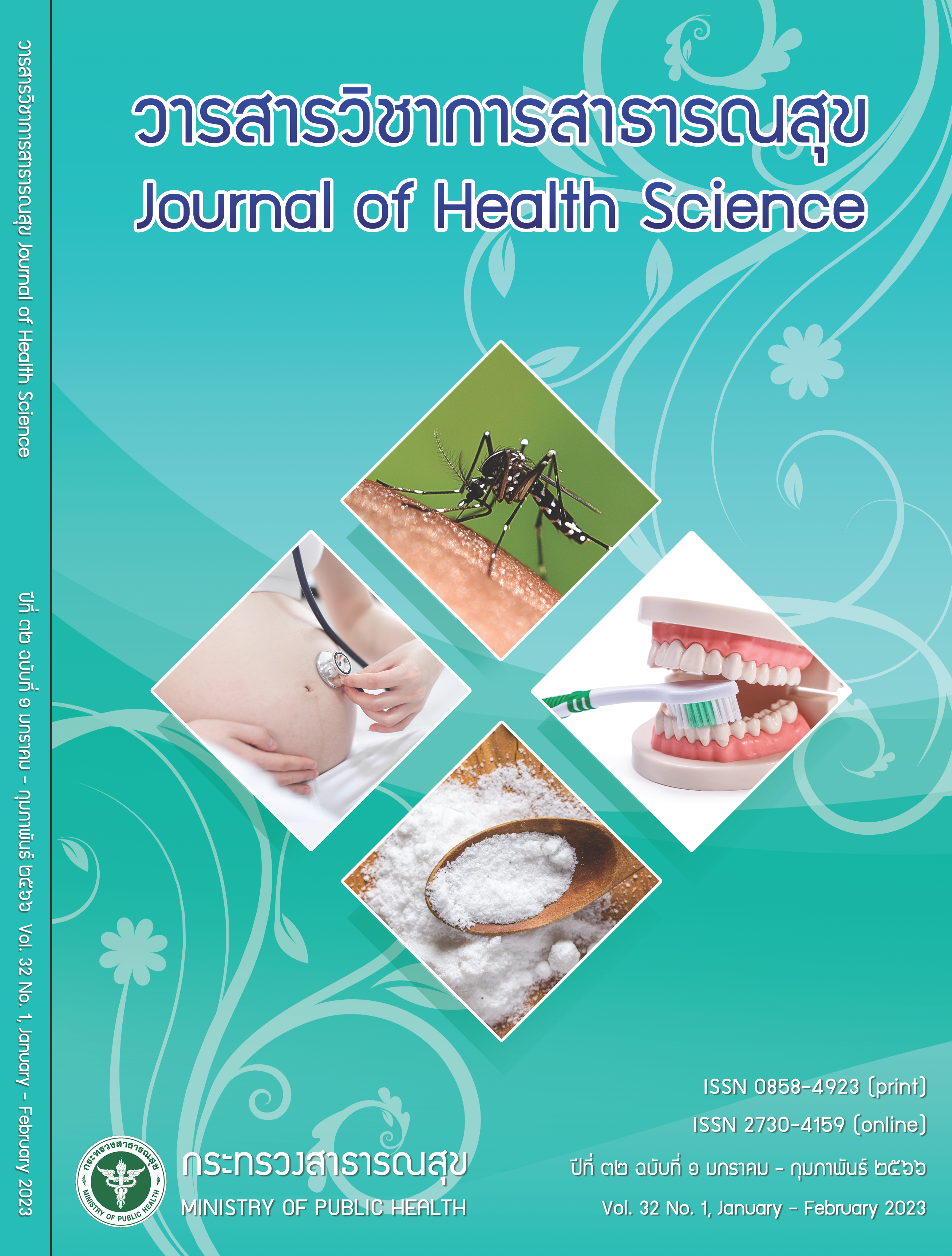Prognostic Factors for Neonatal Mortality with Perinatal Asphyxia in a Neonatal Intensive Care Unit
Keywords:
prognostic factors, perinatal asphyxia, neonatal mortalityAbstract
Perinatal asphyxia is a complicated health problem in newborns and leads to increased neonatal mortality. In Thailand, perinatal asphyxia has been the most common cause of severe morbidity and mortality for the past 10 years. If the prognostic factors of death were known in severe perinatal asphyxia cases requiring neonatal intensive care unit (NICU) admission, the treatment could be planned more efficiently. The objective of this retrospective case-control research was to identify the prognostic factors of neonatal mortality with perinatal asphyxia in NICU. The study was conducted on 120 newborns (60 dead cases and 60 survived controls) undergoing treatment for perinatal asphyxia in the NICU of Chonburi Hospital from January 2018 to December 2021. The risk factors for perinatal asphyxia mortality were identified using multiple logistic regression. A prognostic model was created by using the coefficient of the regression weighted scores of significant risk factors to predict the chance of mortality. The results showed that the prognostic factors affecting mortality were: female (OR 3.60, 95%CI 1.21-10.65, p<0.05), requirement for advanced neonatal resuscitation (OR 3.72, 95%CI 1.14-12.17, p<0.05), and severe acidosis (OR 4.58, 95%CI 1.53-13.70, p<0.05). The predictive model was developed by applying scores of 1, 2 and 2, respectively, for these significant risk factors. With the cutoff point of 3 from the model, the probability of death within 28 days was approximately 60% with a hazard ratio of 6.82, 95%CI 3.82-12.20, and p<0.05.
Downloads
References
Dessu S, Dawit Z, Timerga A, Bafa M. Predictors of mortality among newborns admitted with perinatal asphyxia at public hospitals in Ethiopia: a prospective cohort study. BMC Pediatr 2021;21:304.
Ray S. A baby with low Apgar scores at birth. BMJ 2016;352:i479.
Office of National Statistics, Office of the Permanent Secretary, Ministry of Health. Account throughout the Kingdom 2013 – 2016. Nonthaburi: Ministry of Public Health; 2018.
Chandra S, Ramji S, Thirupuram S. Perinatal asphyxia: multivariate analysis of risk factors in hospital births. Indian Pediatr 1997;34(3):206-12.
Lee AC, Mullany LC, Tielsch JM, Katz J, Khatry SK, LeClerq SC, et al. Risk factors for neonatal mortality due to birth asphyxia in southern Nepal: a prospective, community-based cohort study. Pediatrics 2008;121(5): e1381-90.
Chen ZL, He RZ, Peng Q, Guo KY, Zhang YQ, Yuan HH, et al. Prenatal risk factors for neonatal asphyxia: how risk for each? Zhongguo Dang Dai Er Ke Za Zhi 2009; 11(3):161-5.
Wongsang N. A study of neonatal hypoxia in Samutprakan Hospital. JDMS 2000;25(2):78-86.
Pisavong C, Panichkul P. Risk factors associated with hypoxia of newborn babies in Phramongkutklao Hospital. RTAMedJ 2011;64(3):109-20.
Basiri B, Sabzehei M, Sabahi M. Predictive factors of death in neonates with hypoxic-ischemic encephalopathy receiving selective head cooling. Clin Exp Pediatr 2021; 64(4):180-7.
Uleanya ND, Aniwada EC, Ekwochi U, Uleanya ND. Short term outcome and predictors of survival among birth asphyxiated babies at a tertiary academic hospital in Enugu, South East, Nigeria. Afr Health Sci 2019; 19(1):1554-62.
Nayeri F, Shariat M, Dalili H, Bani Adam L, Zareh Mehrjerdi F, Shakeri A. Perinatal risk factors for neonatal asphyxia in Vali-e-Asr hospital, Tehran-Iran. Iran J Reprod Med 2012;10(2):137-40.
Silveira RC, Procianoy RS. Hypothermia therapy for newborns with hypoxic ischemic encephalopathy. J Pediatr 2515;91(6 Suppl 1):578-83.
Downloads
Published
How to Cite
Issue
Section
License

This work is licensed under a Creative Commons Attribution-NonCommercial-NoDerivatives 4.0 International License.







